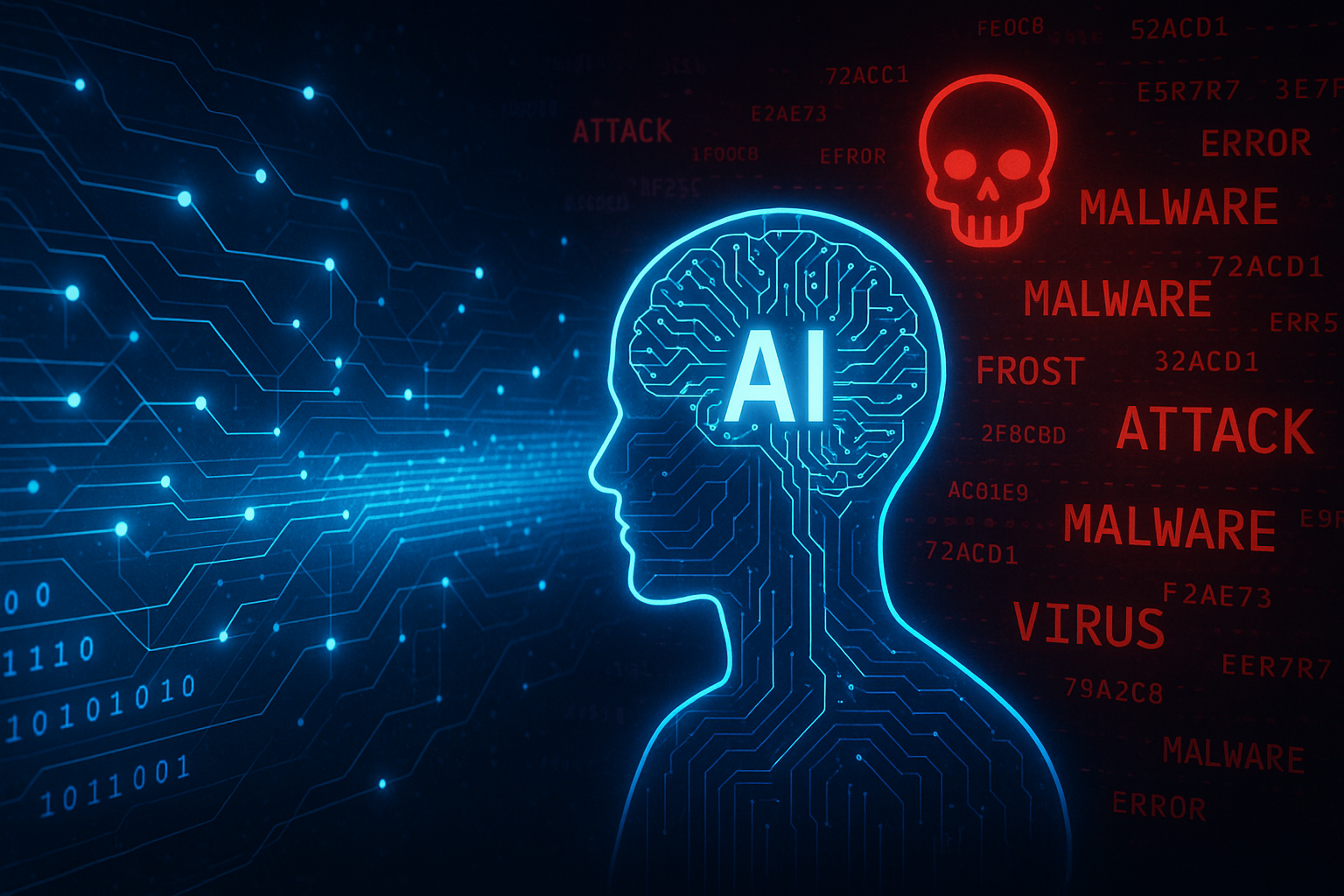Introduction
In 2025, AI is reshaping cybersecurity, acting as both a powerful defender and a tool for sophisticated cyberattacks. As AI-driven malware, phishing, and ransomware evolve, organizations are leveraging AI to enhance threat detection and response. Industry reports, such as those from Gartner and IBM, highlight AI’s dual role in transforming the cybersecurity landscape, with 66% of organizations expecting AI to dominate security strategies this year.
This blog post explores the top AI and cybersecurity trends for 2025, from generative AI defenses to AI-powered cyber threats. Whether you’re a tech enthusiast, business owner, or cybersecurity professional, understanding these trends will help you stay ahead of risks and opportunities. Let’s dive into how AI is revolutionizing cybersecurity in 2025 and what it means for your AI news blog’s audience.
Section 1: The Rise of AI-Powered Cyberattacks in 2025
AI is empowering cybercriminals in 2025 with more sophisticated attacks. Machine learning enables malware to mutate in real-time, evading traditional detection methods, as noted by SentinelOne. AI-driven phishing campaigns use generative AI to craft convincing emails and deepfake voices, with X posts reporting fake passports passing ID checks using tools like ChatGPT.
Key threats include:
• AI-Driven Malware: Mutating code that adapts to bypass static defenses.
• Advanced Phishing: AI-generated emails and voice scams (vishing) that mimic trusted entities.
• Ransomware Evolution: AI optimizes ransomware targeting and encryption, increasing breach rates by 17% year-over-year.
These attacks challenge traditional security, requiring organizations to adopt dynamic, AI-powered defenses to keep pace with cybercriminal innovation.
Section 2: How AI Improves Cybersecurity in 2025
AI is a game-changer for cybersecurity defenses in 2025, enabling faster and smarter threat detection. According to Optiv, AI enhances threat detection and response through predictive analytics and real-time analysis. Key trends include:
1. Generative AI for Defense: AI models identify patterns in massive datasets to predict and prevent breaches.
2. Zero-Trust Architecture: AI-driven zero-trust systems verify every user and device, replacing outdated perimeter-based models by 2025.
3. Automated Threat Hunting: Tools like Uncoder AI convert threat reports into actionable queries, speeding up incident response.
4. Federated Learning: AI trains across decentralized datasets, improving privacy and security for collaborative defense systems.
For example, Check Point’s AI-powered threat prevention protects over 100,000 organizations globally, showcasing AI’s scalability. These advancements empower businesses to stay proactive against evolving threats.
Section 3: AI and Cybersecurity Challenges in 2025
While AI strengthens defenses, it introduces challenges. The World Economic Forum notes that only 37% of organizations have processes to manage AI’s cybersecurity impact, despite 66% expecting it to dominate strategies. Key challenges include:
• New Attack Vectors: AI agents and multi-agent systems create vulnerabilities, as highlighted by Darktrace.
• Data Privacy Concerns: AI’s reliance on vast datasets raises privacy risks, requiring robust governance frameworks.
• Skill Gaps: AI’s rapid data analysis demands cybersecurity professionals with advanced data analytics skills.
Businesses must invest in training and ethical AI frameworks to address these challenges while maximizing AI’s defensive potential.
Section 4: Leveraging AI for Your AI News Blog’s Cybersecurity Content
To make your AI news blog a go-to source for cybersecurity insights, use AI strategically:
1. Create Timely Content: Use AI tools to monitor X posts and web trends, producing posts on topics like “AI-powered cyberattacks 2025” to capture real-time interest.
2. Embed AI-Generated Visuals: Generate infographics or videos with tools like Google AI Studio to illustrate AI-driven threats and defenses, boosting engagement.
3. Optimize for SEO: Use Yoast SEO to target long-tail keywords like “AI and cybersecurity trends 2025,” ensuring high rankings and visibility.
4. Automate Social Media: Schedule X posts with AI agents, using hashtags like #AICybersecurity and #ThreatTrends2025 to tap into conversations.
5. Analyze Reader Behavior: Leverage AI-driven analytics (e.g., Google Analytics) to track which cybersecurity topics resonate most with your audience.
By integrating AI, your blog can deliver cutting-edge, engaging content that keeps readers informed and returning.
Conclusion (100-150 words)
In 2025, AI is both a shield and a sword in cybersecurity, driving innovative defenses and sophisticated attacks. From AI-powered malware to zero-trust architectures, the trends shaping AI and cybersecurity in 2025 demand attention from businesses and tech enthusiasts alike. For your AI news blog, covering these trends with long-tail keywords like “AI and cybersecurity trends 2025” and tools like Yoast SEO and Google AI Studio can boost visibility and engagement. Stay ahead by exploring AI’s dual role in cybersecurity and sharing actionable insights with your audience.
Call to Action: Subscribe to our AI news blog for the latest on AI, cybersecurity, and 2025 tech trends!


Leave a Reply